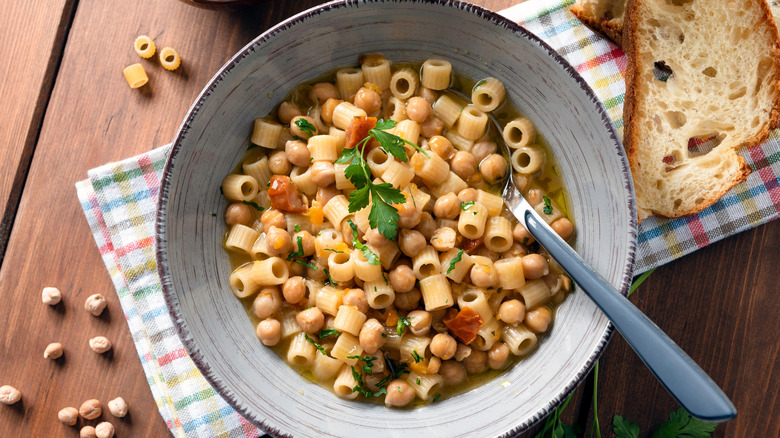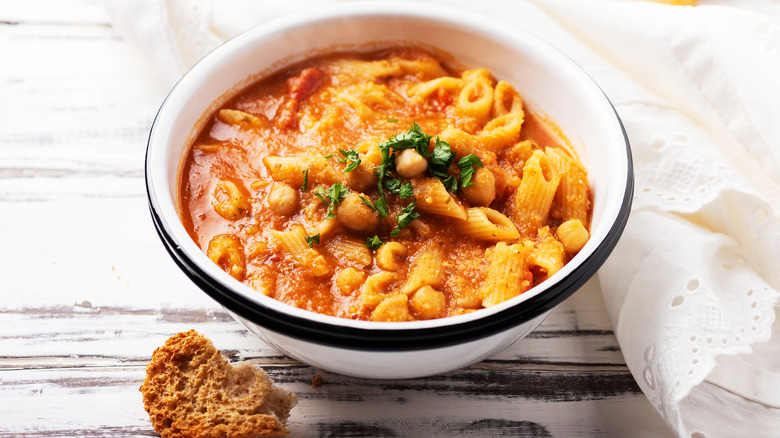Pasta E Ceci Is The Lesser-Known Italian Dish With Humble Origins
Every culture and cuisine has a special subgroup of recipes devoted to stretching pantry and leftover ingredients into new, nourishing meals. These are the resourceful dishes that have fueled nations, supplying the working class with the energy to build cities, roads, and factories, not to mention grow their families. In Italy, this category of food is known as cucina povera, or "poor kitchen." Though these recipes are, by design, lacking decadence, they promise no-frills comfort food that can genuinely nourish you. One such enduring classic is known as pasta e ceci or pasta with chickpeas.
This pasta dish in particular is nearly 2,000 years old and is a specialty of Central and Southern Italy, particularly in the city of Rome. Straddling the line between a starchy stew and a pasta dish with a brothy sauce, it's a meatless meal that still packs a wallop of protein and fiber, keeping you full and satisfied. While the chickpeas work as a proper meat replacement, pasta, the ultimate Italian pantry item, comes as a bulky carbohydrate. The rest of the elements, like the tomato-forward stew base or the vegetable and anchovy-accented broth sauce, can change from house to house, depending on what the cook has on hand. Let's dive a little deeper into the components of pasta e ceci.
An economic and nutritious dish
Chickpeas were brought over to Italy from Turkey and were quickly recognized as a good meat replacement during times when Catholics were expected to abstain from meat, like Lent and Fridays. Even in modern times, pasta e ceci is often offered at classic Roman trattorias on Friday. Dried, soaked, and cooked chickpeas are often used as opposed to their canned counterpart. Regarding which type of pasta to use in this dish, small pasta like ditalini or broken pasta noodles are traditional, but any pasta you have on hand will work, from penne to ziti.
The sauce/broth component has numerous variations, but the Roman version almost always features chopped anchovies added to a thin broth of the chickpea cooking liquid. Other cooks will add stewed tomatoes, celery, onion, garlic, and fresh herbs like rosemary and parsley. For the anchovy phobic, parmesan cheese steps in as a proper salty, umami-packed substitute. Thicker soup bases come from a mashed or pureed mix of cooked chickpeas, but this all comes down to preference of texture. The idea is to stay true to the spirit of the dish, which uses shelf-stable chickpeas and pasta in combination with whatever fresh odds and ends you have. No matter what you choose, the results will be satisfying.

